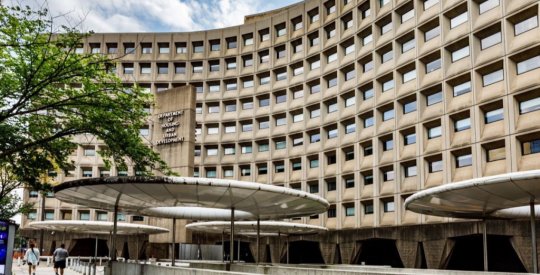Parking ratios for multifamily properties are falling in most metros thanks to urbanization and changing attitudes toward car ownership.
According to a study from the National Apartment Association, over the last decade, the average parking ratio per unit dropped to 1.46, the lowest it has been since the 1960s.
Part of this shift is a decrease in car ownership among renters ages 15 to 34. From its peak in 2009 to 2016, the percentage of renters ages 15 to 34 who owned a car decreased from 33.7% to 30.7%.
Overall, the number of renter-occupied households with one vehicle decreased from 47.4% to 45.5% over the same time period. The number of renter households with two, three or four vehicles also decreased over the decade between 2006 and 2016.
According to the report, if this downward trend persists, developers are going to have to start moving quickly to adjust their future plans.
Green Street Advisors says that parking needs will be cut in half over the next 30 years.
RethinkX, an independent think tank, has an even more drastic outlook and predicts a decline in vehicle ownership from the current 247 million to 44 million by 2030, assuming driverless car technology receives regulatory approval in 2020.
Even now, multifamily developers are considering the benefits of reducing parking ratios, and some designers are even advocating for parking garages to be built as flex space that can be easily converted as parking becomes less and less necessary.
But a parking-less multifamily building is still pretty far in the future. According to the report, Americans are still more than willing to pay a premium for convenient parking, and as long as that is the case, developers will meet that demand.
Using data from Enodo, a real estate predictive analytics company, NAA found that renters are willing to pay rent premiums of up to almost 5% for parking.
According to the report, access to public transportation is the primary independent variable in the changing landscape of parking, and the metros with the lowest premiums for parking are typically those with extensive public transportation systems like Los Angeles, New York, and San Francisco.
As the affordability crisis worsens, there will be additional incentives to reducing parking supply. According to the Terner Center for Housing Innovation at the University of California, Berkeley, each parking space built costs an estimated $30,000 to $75,000. The ability to remove or reduce this cost could give developers the leeway they need to reduce rents while maintaining profits. Many cities have realized this and are taking steps to reduce or eliminate their minimum parking requirements.
"Urban revival is leading to a reduction in the need for parking, with electric vehicles, autonomous cars and the rise of the sharing economy—rides, bikes, scooters—affecting demand," NAA President and CEO Robert Pinnegar said in a statement.
"However, parking is not going away overnight. It is important for community developers, owners and operators to be flexible and help their residents navigate all forms of transportation while addressing it in their business plans," Pinnegar added. "They otherwise might find themselves missing operational efficiencies and opportunities to maximize revenue sources."



